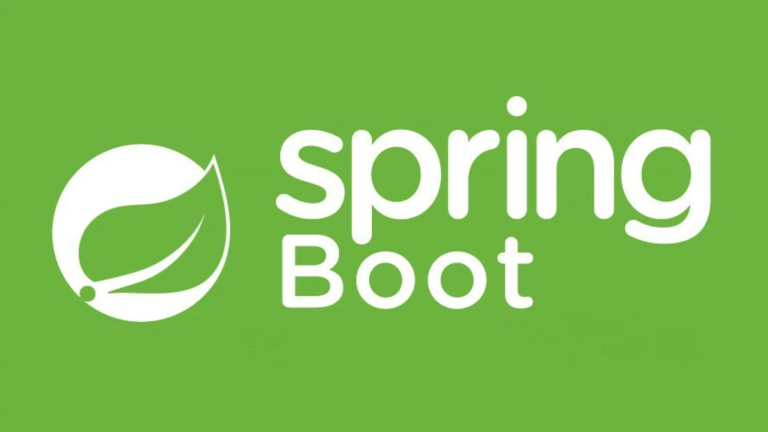Handling Exceptions in Spring Boot REST APIs @RestContoller
When building robust REST APIs with Spring Boot, one critical aspect of user experience is error handling. A well-designed error-handling mechanism not only makes debugging easier for developers but also gives clarity to API clients when something goes wrong. Whether it’s a validation error or a server-side issue, returning consistent error responses can make a significant difference.
This guide will walk you through the best practices for handling exceptions in Spring Boot REST APIs. We’ll discuss how to provide consistent error responses using an ErrorResponse class, enhance responses with timestamps and paths, work with HttpStatus and @ResponseStatus, and even support both JSON and XML error formats.
By the end of this post, you’ll be equipped to build resilient and professional APIs that handle errors gracefully.
Table of Contents
- Why Consistent Error Handling Matters
- Returning Consistent Error Formats Using ErrorResponse Class
- Enhancing Responses with Timestamps, Paths, and Status Codes
- Working with HttpStatus and @ResponseStatus Annotations
- Supporting JSON and XML Error Responses
- Summary
Why Consistent Error Handling Matters
Imagine calling an API endpoint, only to receive a vague or cryptic error message. You have no idea what went wrong or how to fix it. For developers, this is frustrating. For clients, it’s an immediate trust breaker.
Consistent error handling ensures:
- Clarity for Developers and Clients: Errors provide actionable and easy-to-understand feedback.
- Easier Debugging: Clear errors allow teams to resolve issues quickly.
- Professionalism: Well-structured error responses signal that your API adheres to industry best practices.
Spring Boot makes it straightforward to handle exceptions and generate custom error responses that are not only informative but also standardized.
Returning Consistent Error Formats Using ErrorResponse Class
Why Use a Custom ErrorResponse Class?
The default error responses in Spring Boot (via BasicErrorController) are functional but may not fit your project’s requirements. Customizing these responses ensures they align with your API design standards.
An ErrorResponse class can encapsulate:
- Error message
- Timestamp
- HTTP status code
- Additional debugging information (e.g., request path)
Creating the ErrorResponse Model
Here’s an example of an ErrorResponse class:
import java.time.LocalDateTime;
public class ErrorResponse {
private LocalDateTime timestamp;
private int status;
private String error;
private String message;
private String path;
// Constructors
public ErrorResponse(LocalDateTime timestamp, int status, String error, String message, String path) {
this.timestamp = timestamp;
this.status = status;
this.error = error;
this.message = message;
this.path = path;
}
// Getters and setters
}
This model provides all the key pieces of information a client might need to understand and fix an issue.
Using ErrorResponse in Exception Handling
Here’s how you can use the ErrorResponse class in a global exception handler:
import org.springframework.http.HttpStatus;
import org.springframework.http.ResponseEntity;
import org.springframework.web.bind.annotation.ControllerAdvice;
import org.springframework.web.bind.annotation.ExceptionHandler;
import org.springframework.web.context.request.WebRequest;
import java.time.LocalDateTime;
@ControllerAdvice
public class GlobalExceptionHandler {
@ExceptionHandler(Exception.class)
public ResponseEntity<ErrorResponse> handleException(Exception ex, WebRequest request) {
ErrorResponse errorResponse = new ErrorResponse(
LocalDateTime.now(),
HttpStatus.INTERNAL_SERVER_ERROR.value(),
HttpStatus.INTERNAL_SERVER_ERROR.getReasonPhrase(),
ex.getMessage(),
request.getDescription(false)
);
return new ResponseEntity<>(errorResponse, HttpStatus.INTERNAL_SERVER_ERROR);
}
}
This setup catches generic Exception errors and returns a structured ErrorResponse. You can extend this by adding handlers for specific exception types.
Example Error Response (JSON Format)
Here’s what an error response might look like for an invalid API call:
{
"timestamp": "2025-06-12T15:40:00",
"status": 500,
"error": "Internal Server Error",
"message": "Null pointer exception",
"path": "/api/resource"
}
Enhancing Responses with Timestamps, Paths, and Status Codes
Adding details like timestamps and paths in error responses makes troubleshooting more efficient for developers.
Adding Metadata in Response
The ErrorResponse model demonstrated above collects metadata:
- timestamp – When the error occurred.
- path – The endpoint causing the error.
You can retrieve the request path and other metadata using the WebRequest object:
String path = request.getDescription(false).replace("uri=", "");
Including fields like status and message aligns the response with common standards such as RFC 7807 for problem details in HTTP APIs.
Working with HttpStatus and @ResponseStatus Annotations
Using HttpStatus in Responses
The HttpStatus enum provides human-readable HTTP status codes for common error types:
- 400 for Bad Request
- 404 for Not Found
- 500 for Internal Server Error
You can integrate these status codes to ensure that your error responses are meaningful:
ResponseEntity<ErrorResponse> response = new ResponseEntity<>(errorResponse, HttpStatus.NOT_FOUND);
Simplifying with @ResponseStatus
For custom exceptions, @ResponseStatus ties the exception with an HTTP status code:
@ResponseStatus(HttpStatus.BAD_REQUEST)
public class InvalidInputException extends RuntimeException {
public InvalidInputException(String message) {
super(message);
}
}
When this exception is thrown, Spring Boot automatically returns a 400 status code.
Supporting JSON and XML Error Responses
Spring Boot REST APIs can support multiple response formats, including both JSON and XML. A common use case involves allowing clients to decide which format they prefer via the Accept header.
Supporting Multiple Formats
Spring Boot uses Jackson (for JSON) and JAXB (for XML) for serialization. To enable both formats, ensure the following dependencies are included (pom.xml):
<dependency>
<groupId>com.fasterxml.jackson.core</groupId>
<artifactId>jackson-databind</artifactId>
</dependency>
<dependency>
<groupId>org.springframework.boot</groupId>
<artifactId>spring-boot-starter-data-rest</artifactId>
</dependency>
Handling Serialization in ErrorResponse
Add JAXB annotations to your ErrorResponse class to handle XML responses:
import javax.xml.bind.annotation.XmlRootElement;
@XmlRootElement
public class ErrorResponse {
// Fields and constructors
}
Now your API can return XML responses for requests with Accept: application/xml.
Example XML Error Response
<ErrorResponse>
<timestamp>2025-06-12T15:40:00</timestamp>
<status>400</status>
<error>Bad Request</error>
<message>Invalid email format</message>
<path>/api/users</path>
</ErrorResponse>
With minimal effort, you can support multiple formats and enhance API usability.
Summary
Effective exception handling is one of the pillars of a robust REST API. Using the approaches outlined in this guide, you can significantly improve your Spring Boot application’s error management.
Key takeaways include:
- Consistent Error Responses: Use an
ErrorResponseclass to standardize error response structures. - Detailed Metadata: Include timestamps, paths, and HTTP status codes in your responses.
- HttpStatus and Custom Exceptions: Simplify your codebase by leveraging
HttpStatusand@ResponseStatus. - Multiple Response Formats: Support both JSON and XML for comprehensive client compatibility.
By adopting these best practices, you’ll improve the debugging experience for developers, provide confidence to API consumers, and elevate your application’s professional quality. Try implementing these strategies and give your Spring Boot REST APIs a polished, user-friendly touch!

